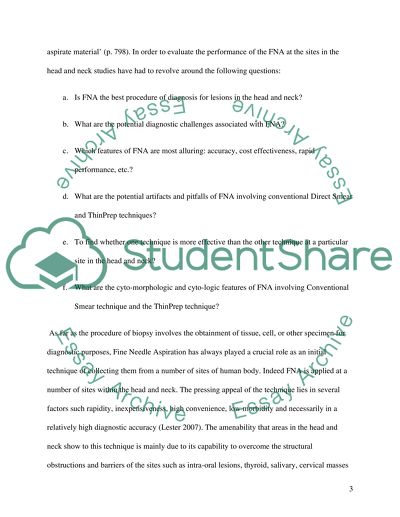Cite this document
(“Comparison of thinprep needle rinse samples versus direct smear Essay”, n.d.)
Comparison of thinprep needle rinse samples versus direct smear Essay. Retrieved from https://studentshare.org/miscellaneous/1552565-comparison-of-thinprep-needle-rinse-samples-versus-direct-smear-techniques-for-fine-neddle-aspiration-biopsies-of-head-and-neck-lesions
Comparison of thinprep needle rinse samples versus direct smear Essay. Retrieved from https://studentshare.org/miscellaneous/1552565-comparison-of-thinprep-needle-rinse-samples-versus-direct-smear-techniques-for-fine-neddle-aspiration-biopsies-of-head-and-neck-lesions
(Comparison of Thinprep Needle Rinse Samples Versus Direct Smear Essay)
Comparison of Thinprep Needle Rinse Samples Versus Direct Smear Essay. https://studentshare.org/miscellaneous/1552565-comparison-of-thinprep-needle-rinse-samples-versus-direct-smear-techniques-for-fine-neddle-aspiration-biopsies-of-head-and-neck-lesions.
Comparison of Thinprep Needle Rinse Samples Versus Direct Smear Essay. https://studentshare.org/miscellaneous/1552565-comparison-of-thinprep-needle-rinse-samples-versus-direct-smear-techniques-for-fine-neddle-aspiration-biopsies-of-head-and-neck-lesions.
“Comparison of Thinprep Needle Rinse Samples Versus Direct Smear Essay”, n.d. https://studentshare.org/miscellaneous/1552565-comparison-of-thinprep-needle-rinse-samples-versus-direct-smear-techniques-for-fine-neddle-aspiration-biopsies-of-head-and-neck-lesions.


